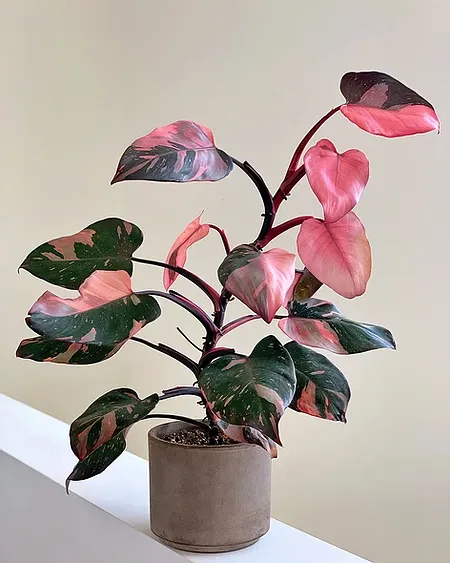 |
| A Potted Pink Princess Philodendron |
Since Pink Princess Philodendron is also widely called Philodendron Pink Princess, I'm gonna use these two terms interchangeably.
The Pink Princess Philodendron is one of the most stunning and beautiful houseplants to grow at home. With its dark green leaves and bright pink variegation, this indoor plant is rightly called the “pink princess.” Pink Princess philodendron plants grow well in pots or in hanging baskets where the trailing vines and pink leaves create a stunning showpiece.
What is a Pink Princess Philodendron?
For starters, the Pink Princess Philodendron (botanical name Philodendron erubescens), belongs to the Araceae family. Apart from the splendid pink and dark green leaves, the plant is identified by large waxy leaves. Depending on the climate and place, these leaves can grow up to 9” (22 cm) long and 5” (12 cm) wide.
The pinkness on the leaves is due to a lack of chlorophyll, the chemical that makes plants’ leaves green and helps in photosynthesis. However, some greenness on the leaves is also necessary so that the plants can photosynthesize. Chlorophyll helps to create oxygen and glucose for healthy growth.
Because all types of Philodendrons are tropical plants, these pink beauties grow well indoors. You can also grow the pink princess plant in your garden if the weather permits. Pick a bright but shaded spot for the plant to thrive. Like I have kept one of my pink princesses near the kitchen window, which is bright yet there's no direct sunlight. You can also take your potted plant outdoors during summer if you live in temperate climates.
Related post:
Philodendron Gloriosum Care: A Complete Beginner's Guide With FAQs
Pink Princess Philodendron Care
So, despite its exotic look, the pink princess plant is very easy to care for. However, due to its breathtaking pink variegation, there are a few essential care tips. Following this care guide will help you to ensure that the dark green-burgundy leaves with bright pink patches stay vibrant.
What is a Philodendron Pink Congo?
So, avoid these cheap imitations and grow a true pink princess at home. This way, you’ll always have a beautiful plant with spectacular pink and dark green leaves. Remember, green leaves are important as they help in synthesizing food for the plant. lack of green leaves means the plant will not last for long.
How to Care for Philodendron Pink Princess
Before we look at the essential care tips to help your pink princess thrive, there is an important question to answer: how to keep the leaves pink?
How to Keep Pink Leaves of Your Pink Princess Philodendron Plant
Ideally, you need a combination of green and pink colors for this Philodendron to thrive. The green parts are necessary for photosynthesis. So, if too many of the leaves start turning pink, your plant will starve and eventually die. Too much green, well it won't be a pink princess plant anymore!
If you notice that new leaves are growing pure pink, prune the stems back just above the leaf joint—node. The node is where your new variegated leaves will grow from. You want to have the last leaf on the stem with balanced variegation.
Light Requirements for Growing Philodendron Pink Princess
Philodendron Pink Princess grows best in bright indirect light. This kind of light provides the ideal lighting conditions for healthy growth and balanced variegation. Filtered light is also excellent—the main thing is that the sun doesn’t shine directly on the leaves. So, the best place is in an east- or west-facing room that gets sunlight for part of the day.
You’ll need to shade your plant if it’s in a very sunny location—like in a south-facing room. Try to keep the pink plant away from the window. Leaves that turn yellow is one way to tell that it’s getting too much sunlight. So, if a few leaves have started yellowing, move the plant to a shaded location.
Naturally, a leaf will turn yellow as it ages—as long as the other leaves look healthy, don’t worry. At the end of the article, you’ll find out how to revive a dying Pink Princess Philodendron.
The Best Potting Soil for Philodendron Pink Princess
The best type of potting mix for Philodendron erubescens should provide enough nutrients, and hold moisture, but not become soggy. To create the ideal growing medium, mix peat-based soil with perlite or orchid substrate. The rich, organic peat is fertile and holds moisture, and the other ingredients allow excess water to drain.
Like many types of aroids, this Philodendron variety has aerial roots. These draw moisture and nutrients from the air. Philodendron plants also have subterranean roots. So, you can grow your pink princess plant in a soilless mixture such as sphagnum moss or peat-pearlite.
Although these “princesses” aren’t fussy growers, they need to grow in moist soil. So, you need to take care and ensure the soil remains moist all the time.
How to Water Pink Princess Philodendron
The most common mistake when watering a Pink Princess Philodendron is trying to look after it too much. Over-watering will lead to several growing issues, including root rot, yellowing leaves, and a wilted appearance. Instead of watering on a set schedule, test the moisture content of the potting mix. Press on the soil—if there’s no moisture, water the plant. Otherwise, hold off watering until the soil dries out more.
There are a few reasons why thorough watering is better than shallow watering. If you only water plants a little, the roots won’t get enough moisture. So, although you seem to be caring for your plant, it could still show signs of under-watering. Also, fungus gnats live in the top 1” to 2” soil and love damp conditions. If you don’t let the top part of the soil dry out, you are only creating an environment for bugs to thrive. So, be careful and don't let the topsoil moist.
The Best Temperature for Pink Princess Philodendron
One important thing to remember is that you should protect Philodendron plants from direct heat or cold drafts. So, in the winter—keep the plant away from hot radiators. In the summer—avoid placing the plant pot in air conditioning streams or beside an open window.
Here’s a good tip to know if the temperature for your Pink Princess is right—if you feel comfortable at home, “she” will also feel good.
Philodendron Pink Princess Care: Humidity
Pink Princess Philodendron plants—like most tropical houseplants—need plenty of humidity. Usually, average household humidity is too dry for these plants. To hydrate your plant’s leaves, mist the leaves, put them on a humidifying tray, or use a room humidifier.
Here is your guide to getting humidity levels right for a Philodendron Pink Princess:
Misting the leaves—Use a spray bottle and spray a fine mist above the plant’s leaves. Finely mist the leaves every two to three days. In hot, dry weather, you may need to spray the leaves every day.
Room humidifier—Use a room humidifier if you have many tropical plants. Ideally, you need around 40% humidity for your plant to feel happy.
Pebble tray humidifier—One of the easiest ways to get increased humidity for plants is to place them on a humidity tray. To make one of these, place a layer of pebbles on a wide tray. Fill the tray with water until it reaches halfway up the small stones. Place your plant pot on the pebbles.
Group houseplants together—You can also place your houseplants close to each other. This proximity creates a naturally humid atmosphere, similar to their native environment.
Fertilizer for Philodendron Pink Princess
Houseplants growing in pots need regular feeding to encourage healthy growth. The best type of fertilizer for a Pink Princess is a balanced liquid fertilizer with micro and macronutrients. Feed your plant every four weeks during the growing season—spring and summer. Stop fertilizing during fall and winter when growth slows down.
A high-quality fertilizer helps your plant grow healthily and vigorously. But remember, that more isn’t always better. In fact, too much fertilizer can be detrimental to your plant’s health. A buildup of mineral salts can cause root burn to hinder growth.
To prevent a buildup of fertilizer salts, flush the soil every four to five months. All you need to do is run water slowly through the potting mix for about two to three minutes. Resume regular watering and feeding when the top 1” of soil has completely dried out.
If your Pink Princess lacks essential nutrients, you will notice slow growth and small leaves. The variegated pink and dark green leaves could also lose some of their vibrancy.
Repotting Philodendron Pink Princess
Philodendron erubescens should be repotted once a year when they’re young and then every two years after that. Repotting your plant gives you the chance to refresh the potting mix and also encourages growth. Larger containers provide the roots with more room to grow. Another benefit of repotting is that it prevents the plant from becoming rootbound, which helps with drainage.
How should you repot a pink princess? Because this is one of the most expensive houseplants you can grow, it makes sense to care for the plant.
Please follow this guide on repotting a Philodendron Pink Princess:
- The day before repotting, thoroughly water the plant to help minimize stress.
- Get a new pot that is 1” to 2” (2.5 – 5 cm) larger than the current one.
- Remove the plant from its container and gently remove all soil from the roots.
- Carefully inspect the roots for signs of rot or disease—prune as necessary. Healthy roots should be white or light tan and flexible, not mushy.
- Half-fill the new pot with a suitable potting mix and put the plant in.
- Make sure that the Pink Princess is at the same height as in the previous container.
- Fill the remaining space with potting soil.
- Gently press around the stems to support the plant.
- Water thoroughly.
How to Prune Philodendron Pink Princess
A Philodendron Pink Princess benefits from regular pruning. The best time to prune your plant is in spring or fall—just before or just after the growing season. You can prune off any leaves that appear yellow or dying. Proper pruning can encourage vigorous growth and prevent leggy stems from spoiling the plant’s appearance.
To prune a Philodendron erubescens, always make a clean cut just above the node—the place where leaves attach to the stem. New pink and dark green or burgundy leaves will grow from the node. Pruning not only helps encourage new growth but helps control height if space in your room is limited.
Propagating Philodendron Pink Princess
Philodendron Pink Princess propagation is extremely easy. Growing new plants from stem cuttings is an easy way to get more of these delightful trailing houseplants. They can also make great gifts for your friends or family.
The best way to propagate these beautiful pink Philodendron plants is by stem cuttings.
Here is how to propagate your plant:
- Cut a stem just below one of the nodes, making sure that there are three or four healthy pinkish leaves on the stem.
- Place the cutting in a jar of water.
- After a few weeks, roots should appear.
- Wait until the roots are 2” (5 cm) and then plant the rooted Philodendron cutting in a pot that is filled with a light potting mix.
The other Philodendron Pink Princess propagation method is by root division. When you are repotting the plant, you can divide the plant if you’ve got four or more stems at the roots. Carefully separate the roots, so you have at least two or three stems in each new plant. Repot as instructed above.
Philodendron Pink Princess: Pest and Diseases
Pink Princess Philodendron is a hardy indoor plant that is reasonably resistant to diseases and pests.
Philodendron Pink Princess pests—The most common pests are mealybugs or aphids. Please read this article to know how to spot the signs of common houseplant pests and how to get rid of them.
Philodendron Pink Princess diseases—Most diseases that affect the plant are due to watering issues that cause root rot. Only water the plant when the soil is partly dry. Wilting leaves can be a sign of too much water or not enough moisture.
Is Philodendron Pink Princess Toxic?
Pink Princess Philodendron plants are toxic to pets in your home. The American Society for the Prevention of Cruelty to Animals (ASPCA) states that variegated philodendrons are toxic to cats and dogs. The sap contains calcium oxalate crystals, which cause severe irritation to the skin or when ingested.
FAQs
Although your “pink princess” isn’t a fussy houseplant, there are a few signs that “she” is becoming stressed. Here are some answers to common questions about caring for the plant.
Why are the pink leaves turning yellow?
Yellow leaves are often a sign of too much direct sunlight or watering issues. So, check that your pink Philodendron is not in the sun’s rays throughout the day. It’s worthwhile checking the moisture and then adjusting the watering as necessary.
Remember that older leaves naturally turn yellow. So, if you’ve only got one or two leaves that look a bit off, there is probably nothing to worry about.
Why are Philodendron Pink Princess leaves turning brown?
Over-watering or under-watering can also make the leaves turn brown. However, it’s good to check the size of the pot. If the container is too large for the plant, you can quickly get moisture problems.
How can I encourage pink variegation in my pink princess philodendron?
Your Philodendron Pink Princess needs plenty of bright, filtered light to keep a balance of dark green and pink. If your plant starts developing mostly green leaves—let’s face it, no one wants a “Green Prince”—prune some of the leaves back to just above the last variegated leaf. This should do the trick for you.
Why are pink Princess philodendron so expensive?
There are a few reasons why Pink Princess philodendrons might be expensive. One reason is that they are relatively rare and hard to find, which can drive up their price. Another reason is that they are in high demand due to their attractive pink and green coloration, and when demand outstrips supply, the price of a product will often increase.
Additionally, these plants can be difficult to grow and care for, which can make them more expensive to produce and therefore more costly for consumers to purchase. Amazon runs very attractive offers on live plants from time to time, you can check the current offers here.
Is philodendron pink princess hard to care for?
Pink Princess philodendrons can be relatively challenging to care for, especially for those who are new to growing houseplants. They require a lot of indirect light and can be sensitive to changes in temperature and humidity. They also need to be watered regularly, but it's important not to overwater them, as they are prone to root rot. It's also important to regularly fertilize Pink Princess philodendrons, as they are heavy feeders and require a lot of nutrients to thrive.
Finally, these plants can be sensitive to pests such as spider mites, so it's important to keep an eye out for any signs of infestation and address the issue promptly. In general, Pink Princess philodendrons require a lot of attention and care to stay healthy, which can make them challenging for some growers to manage.
How do you keep Pink Princess Philodendron pink?
Pink Princess philodendrons are known for their attractive pink and green coloration, with the pink color coming from the new growth on the plant. To keep your Pink Princess philodendron looking pink, it's important to provide it with the right growing conditions. This includes giving it plenty of indirect light, as direct sunlight can fade the pink coloration over time.
It's also important to keep the plant well-watered and fertilized, as these factors can affect the health and vigor of the plant, and therefore its ability to produce pink new growth. Finally, it's a good idea to prune off any yellow or brown leaves, as these can indicate that the plant is stressed and may not be producing as much pink new growth as it otherwise could.
Why is my pink princess not pink?
There are a few reasons why your Pink Princess Philodendron might not be producing pink new growth. One possibility is that the plant is not getting enough light. Pink Princess philodendrons need bright, indirect light in order to thrive, and if they are not getting enough light, they may not produce as much pink new growth. Another possibility is that the plant is not getting enough nutrients.
These plants are heavy feeders and require a lot of nutrients to produce new growth, so if they are not getting enough fertilization, they may not produce as much pink new growth as they otherwise would.
Finally, it's possible that the plant is experiencing stress from other factors, such as changes in temperature or humidity, pests, or disease, which can affect its ability to produce new growth. If you are concerned about the lack of pink coloration on your Pink Princess philodendron, it's a good idea to carefully assess the plant's growing conditions and address any issues that you find.
Can a reverted pink princess turn pink again?
It is possible for a Pink Princess philodendron that has "reverted" to green to produce pink new growth again, but it's not always easy to achieve. Reversion in Pink Princess philodendrons is typically caused by a lack of light, which can cause the plant to stop producing pink new growth and revert to its natural green color.
If this is the cause of the reversion in your plant, you may be able to encourage it to produce pink new growth again by providing it with brighter, indirect light. However, it's important to be patient, as it can take some time for the plant to start producing pink new growth again, and in some cases, the plant may not return to its pink coloration even with improved growing conditions.
Do pink princess grow fast?
Pink Princess philodendrons are relatively slow-growing plants, and they do not typically grow as fast as some other types of houseplants. In general, you can expect a Pink Princess philodendron to grow about 6 to 12 inches per year under good growing conditions.
However, the exact rate of growth can vary depending on factors such as the amount of light the plant receives, the quality of the soil it is grown in, and the amount of care and attention it receives. Providing your Pink Princess philodendron with the right combination of light, water, nutrients, and other care will help it to grow as vigorously as possible.
How do you make a pink princess philodendron bushy?
There are a few things you can do to encourage your Pink Princess philodendron to grow more bushy and full:
Provide the plant with plenty of indirect light. Pink Princess philodendrons need bright, indirect light in order to thrive, and providing them with enough light can help them to grow more vigorously and produce more new growth.
Prune the plant regularly. Removing dead or damaged leaves and stems will help to promote new growth and encourage the plant to become bushier.
Fertilize the plant regularly. Pink Princess philodendrons are heavy feeders and need a lot of nutrients to grow and thrive. Using a balanced fertilizer according to the package instructions will help the plant grow more vigorously and produce more new growth.
Avoid overwatering the plant. Pink Princess philodendrons are susceptible to root rot, so it's important to water them consistently but not excessively. Let the soil dry out slightly between waterings to avoid over-saturating the roots.
By following these tips, you should be able to encourage your Pink Princess philodendron to grow bushy and full over time.
How do I make my pink princess philodendron more variegated?
It can be difficult to increase the variegation in a Pink Princess philodendron, as the amount of variegation on the leaves is largely determined by genetics. However, there are a few things you can try to encourage your plant to produce more variegated leaves:
Provide the plant with plenty of bright, indirect light. Pink Princess philodendrons need a lot of light to thrive, and providing them with enough light can help them to produce more variegated leaves.
Avoid over-fertilizing the plant. Over-fertilizing can lead to excess green growth, which can decrease the amount of variegation on the leaves.
Prune off any all-green leaves that appear. Removing all-green leaves can help to encourage the plant to produce more variegated growth.
Avoid exposing the plant to extreme changes in temperature or humidity, as these can cause stress that can reduce the amount of variegation on the leaves.
While there is no guarantee that these steps will increase the variegation on your Pink Princess philodendron, they can help to create the best conditions for the plant to produce more variegated leaves.
Does pink princess like being misted?
Pink Princess philodendrons generally do not require misting, as they prefer relatively dry air. In fact, too much moisture in the air can lead to problems such as root rot and other types of fungal diseases, which can be harmful to the plant. It's a good idea to keep the humidity around your Pink Princess philodendron at a moderate level, rather than using misting as a way to increase humidity.
If you live in a dry climate or if your home tends to be very dry, you can increase the humidity around your plant by placing a humidity tray under the pot or using a humidifier. These methods can help to create a more suitable environment for your Pink Princess philodendron without the risk of overwatering or over-misting the plant.
Why is my pink princess turning white?
There are a few potential reasons why your Pink Princess philodendron might be turning white. One possibility is that the plant is getting too much direct sunlight, which can cause the leaves to turn pale or yellow. Another possibility is that the plant is getting too much water, which can cause the roots to rot and the leaves to turn yellow or white.
It's also possible that the plant is experiencing a nutrient deficiency, which can cause the leaves to turn pale or yellow. Finally, it's possible that the plant is being exposed to extreme temperature changes or is experiencing other types of stress, which can cause the leaves to turn pale or yellow.
To determine the cause of the white coloration on your Pink Princess philodendron, it's a good idea to carefully assess the plant's growing conditions and address any issues that you find.
Why is my pink princess turning green?
There are a few possible reasons why your Pink Princess philodendron might be turning green. One possibility is that the plant is not getting enough light, which can cause the pink coloration to fade and the leaves to turn green. Pink Princess philodendrons need bright, indirect light in order to thrive and produce their signature pink and green coloration, so if the plant is not getting enough light, it may turn green.
Another possibility is that the plant is experiencing a nutrient deficiency, which can cause the leaves to turn pale or yellow and eventually turn green. It's also possible that the plant is being exposed to extreme temperature changes or is experiencing other types of stress, which can cause the leaves to turn pale or yellow and eventually turn green.
To determine the cause of the green coloration on your Pink Princess philodendron, it's a good idea to carefully assess the plant's growing conditions and address any issues that you find.
How big do pink princesses grow?
Pink Princess philodendrons are relatively large houseplants, and they can grow quite large over time. In general, you can expect a Pink Princess philodendron to reach a height of about 3 to 4 feet when grown indoors.
However, the exact size of the plant will depend on a number of factors, including the quality of the soil it is grown in, the amount of light it receives, and the amount of care and attention it receives. Providing your Pink Princess philodendron with the right combination of light, water, nutrients, and other care will help it to grow as vigorously as possible.
Can you propagate pink princess in water?
It is generally not recommended to propagate Pink Princess philodendrons in water, as these plants are prone to root rot and can be difficult to grow from cuttings. Instead, it is generally recommended to propagate Pink Princess philodendrons using stem cuttings.
To do this, use a clean, sharp knife or scissors to take a stem cutting about 6 inches long from a healthy part of the plant. Remove the lower leaves from the cutting, and dip the cut end in the rooting hormone to encourage root growth. Plant the cutting in a pot filled with a well-draining soil mix, and water it well.
Keep the soil moist, but not soggy, and provide the cutting with plenty of bright, indirect light. It can take several weeks to several months for the cutting to root and start producing new growth, so be patient and provide the cutting with consistent care while it is establishing itself.
In conclusion, Pink Princess philodendrons are a popular and attractive type of houseplant known for their distinctive pink and green coloration. These plants are relatively rare and can be expensive to purchase, and they can be challenging to care for, especially for those who are new to growing houseplants.
Pink Princess philodendrons need bright, indirect light and should be watered regularly, but not overwatered, as they are prone to root rot. They also require regular fertilization, as they are heavy feeders and need a lot of nutrients to thrive. In addition, Pink Princess philodendrons can be sensitive to pests such as spider mites and can be affected by stress from changes in temperature or humidity.
Despite these challenges, Pink Princess philodendrons can make a beautiful and rewarding addition to any home, with their attractive foliage and relatively low maintenance needs.
What do you think about the pink princess philodendron? Do you own this gorgeous houseplant? Let us know in the comments section below, we would love to hear from you!
Cheers and best wishes!
Monstera Adansonii Propagation and Care: A Complete Guide to Grow the Swiss Cheese Plant at HomePhilodendron Gloriosum Care: A Complete Beginner's Guide With FAQs
Disclosure: This content is reader-supported, which means if you click on some of our links and buy a service/product, we may earn a commission at no extra cost to you. Full disclosure here.
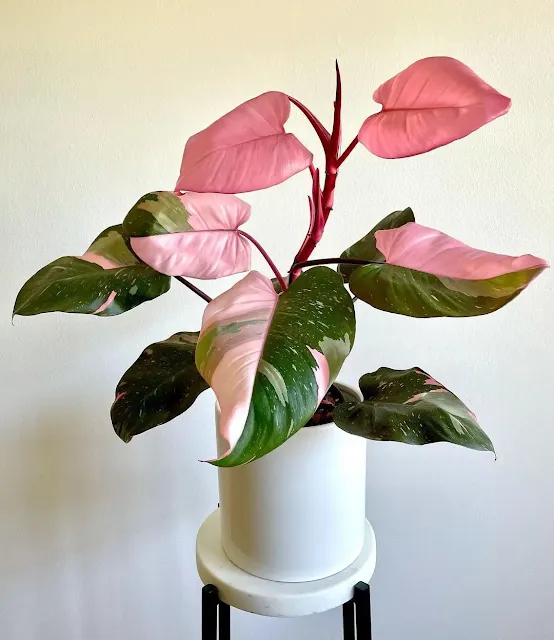




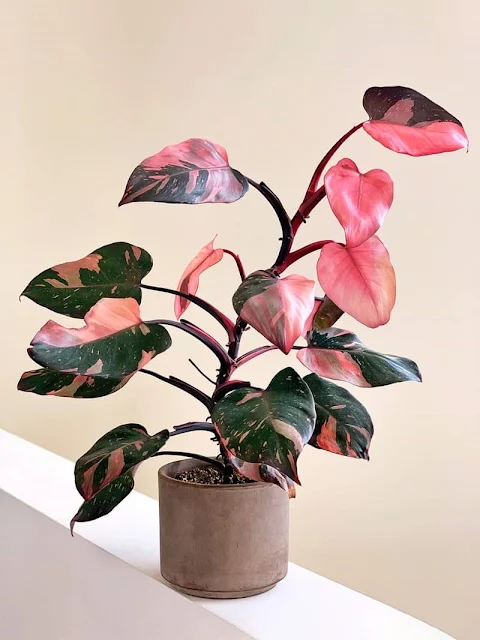
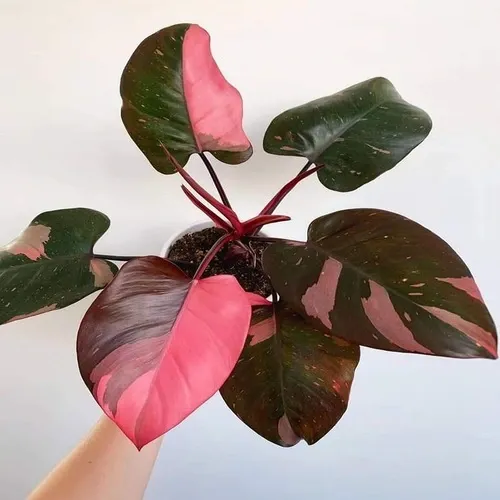



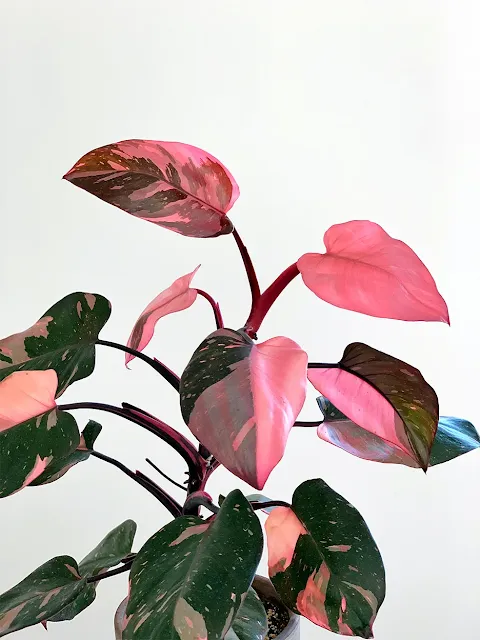

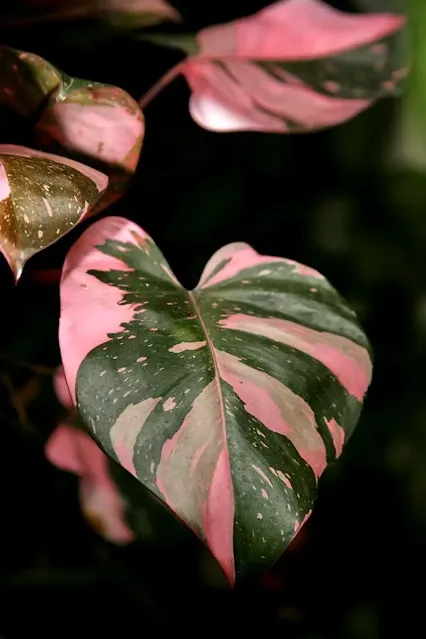

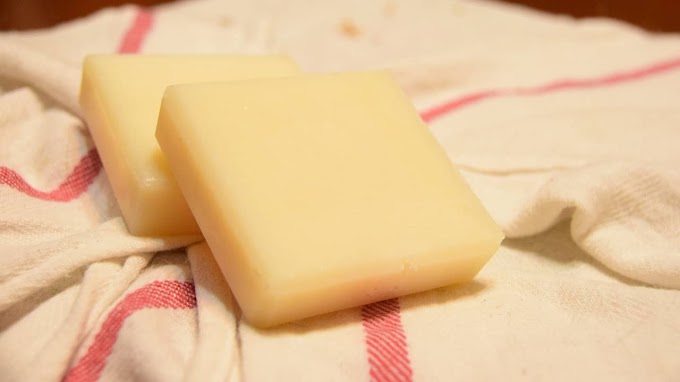

![How The Healing Touch of Bageshwar Dham Sarkar Cured Lakhmi's Backpain Miraculously! [Video Included]](https://blogger.googleusercontent.com/img/b/R29vZ2xl/AVvXsEg01rHPfpiVWhtGNBen7_nOt1E7bW9Sh2rUs0jqRwBxoXp0m6igwodfQunEnIEbvWH2c_U0raE_pETCAjU73Bhw-85UdPBSay6b-hcMVsFHu_dTYduJa38tZFyS4ibB4m4mQBq-1wZOWYxACIBbpq76BNvXH8uEuLjWvdjmGSVTBQJK0s8i4bKhUWPA1pU/w680/baba%20bageshwar%20dham%2028%20june%20(1).jpg)





.png)